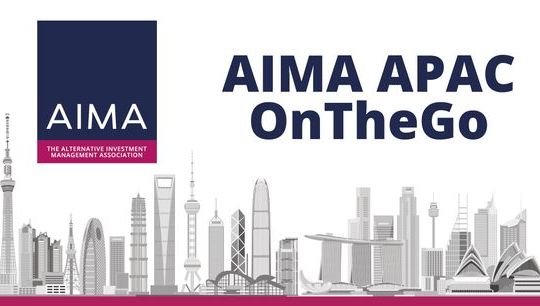Driving diversity in alternative investments: The path to organizational success
By Camille Asaro, Partner, Kelly Rau and Jacinta Munro, KPMG
Published: 13 July 2018
KPMG LLP has launched its sixth annual Global Women in Alternative Investments Survey. The conversation on gender and diversity is now mainstream with many discussing the issues and challenges facing women around the world. This year, our ambition is to elevate the conversation to a new level. We will not focus on what the issues are, but how we can collectively create a culture of change. To do so, we are seeking input across the industry, regardless of gender. Together, we can uncover how gender and diversity becomes a business imperative and what actions are required to get there. Please complete our survey today.
The conversation around diversity within the alternative investment industry is changing.
When we look back at KPMG’s annual Women in Alternative Investments Report in 2014, it was an uphill battle to convince firms to discuss the role that diversity plays in organizational success. Responses, and the associated pushback, became all too familiar: firms were meritocracies, we were told, and pursuing diversity or targets for gender balance should not be considered as it took the focus off what was important, and that was investment performance.
Over time, it has been demonstrated that, contrary to popular belief, the push for greater diversity is not a distraction from business imperatives, but rather directly contributes to higher investment performance and overall profitability. In one recent study conducted across eight countries, researchers found that not only was there a “statistically significant relationship between diversity and innovation outcomes in all countries examined,” but that the more diverse firms “had both 19% points higher innovation revenues and 9% points higher EBIT margins, on average.” Other studies, as well as anecdotal evidence, confirm and reinforce these findings.
Pursuit of workforce diversity is now a business imperative. Across the industry, it has become more widely recognised that diversity of thought and opinion is critical to making better business decisions. This diversity can only be achieved by attracting, hiring and retaining a broader range of people across gender, race, sexuality, physical ability, and other areas. As a result, the conversation is now shifting from why diversity is important to how organizations can attract and retain a more diverse workforce.
Addressing challenges and barriers
While the value of workforce diversity has become more widely accepted, progress toward achieving a more equitable gender balance in asset management has nonetheless been slow. We do see greater female participation in the alternative investments space. However, many of these women work in support and other non-investment roles. It is especially positive to see an increase in the number of women in senior leadership roles, though these women are more likely to work as the Chief Marketing Officer or Chief Financial Officer rather than a Portfolio Manager or Chief Investment Officer.
Speaking to women, there are a number of factors that affect organisations’ ability to attract and retain female employees. Some challenges exist in the entry stage of women’s careers, especially the cultural and societal expectations that play a large role in directing women’s choices in education and early job opportunities.
For some women, alternative investments was not an area that they heard about as a viable career option, pointing to the need to continue programs to raise university-level awareness of potential roles in asset management. For others, there is a perception—regardless of its accuracy—that asset management is a “boys’ club” where women are not welcome or will face an especially challenging road to success. In the longer term, many women expressed concerns regarding the difficulty of managing a work/life balance an asset management firm. These latter issues point to the need for a shift in workplace culture in some instances, and measures to better dispel the myths in others.
Creating inclusivity from the top down
Though the recent shift in the conversation around diversity is a strong positive sign for change, we have to recognise that there is no quick fix for an imbalance stemming from decades of structural inequity. Greater inclusion, and the creation of an industry that actively attracts and more importantly retains a wide variety of people and backgrounds, will require time.
For individual organisations, change has to come from the top. Leaders not only set the tone but can also create the specific programs, goals and measurements that are required to create meaningful change. Successful approaches seen to date include setting measurable targets for diversity hiring and retention, as well as tying diversity to compensation and rewards, creating both a carrot and a stick for forward progress. Having women on the board of directors is another significant step that can have cascading effects not only in the composition of the executive team but also throughout the organisation as a whole.
When it comes to hiring and promotion, leaders need to push to see a diverse slate of candidates, especially for leadership roles. For example, if an organisation is launching a new vehicle or fund, it should ensure that female and other diverse candidates are considered. Ensuring that diverse candidates are considered for internal promotions also helps ensure that an inclusive mix of individuals within the organisation are given opportunities to excel.
Understandably, organisations that have made the greatest progress to date tend to be those that publicly champion or otherwise make a commitment to gender diversity. Not only are those that are participating in the discussion more likely to make advances, but those that have put a stake in the sand have a standard against which their progress can be publicly measured.
Individual actions for change
Even five years ago, women’s voices were the ones pushing for greater gender diversity and inclusion. Now there are more men talking about the importance of a more balanced gender split, the necessity for an inclusive office culture and the uncomfortable truth that female co-workers may not have access to the same workplace opportunities. One important action that men are taking is helping support female talent in their organisations through sponsorships. Beyond mentorship, a sponsor can actively speak out on behalf of an individual in conversations surrounding promotion and advancement.
From the investment side, more investors are actively looking to invest in diverse organisations. Both male and female investors in pension funds, sovereigns and large endowments are starting to ask hard questions about organisational diversity as part of their investment-making decisions. In some situations, no longer is it enough for funds to show diversity in their investments: they must also demonstrate diversity in their organisations. If this trend continues, firms’ increasing awareness that investment opportunities are being lost due to lack of organisational diversity will provide an external motivator and competitive pressure for change.
Searching for solutions
As the business case for greater diversity and inclusion in the asset management space has already been made, the conversation can move on to more complex topics. In our upcoming Women in Alternative Investments Report, we turn the attention from why an organisation should pursue greater diversity to the thorny question of how firms can best create an inclusive work environment that attracts and retains diverse talent.
The alternative investments sector is a fast-paced, challenging and fiercely competitive part of the financial industry—but in the pursuit of greater organisational diversity we are all working together. Through collaboration, mentorships and the sharing of ideas, together we can create a more profitable future where all can benefit.
To contact the authors:
Camille Asaro, Partner
KPMG in the US
T: +1 212 954 4610
E: [email protected]
Kelly Rau, Partner
KPMG in the US
T: +1 212 872 3455
E: [email protected]
Jacinta Munro, Head of Compliance and Conduct
KPMG in Australia
T: +61 3 9288 5877
E: [email protected]











